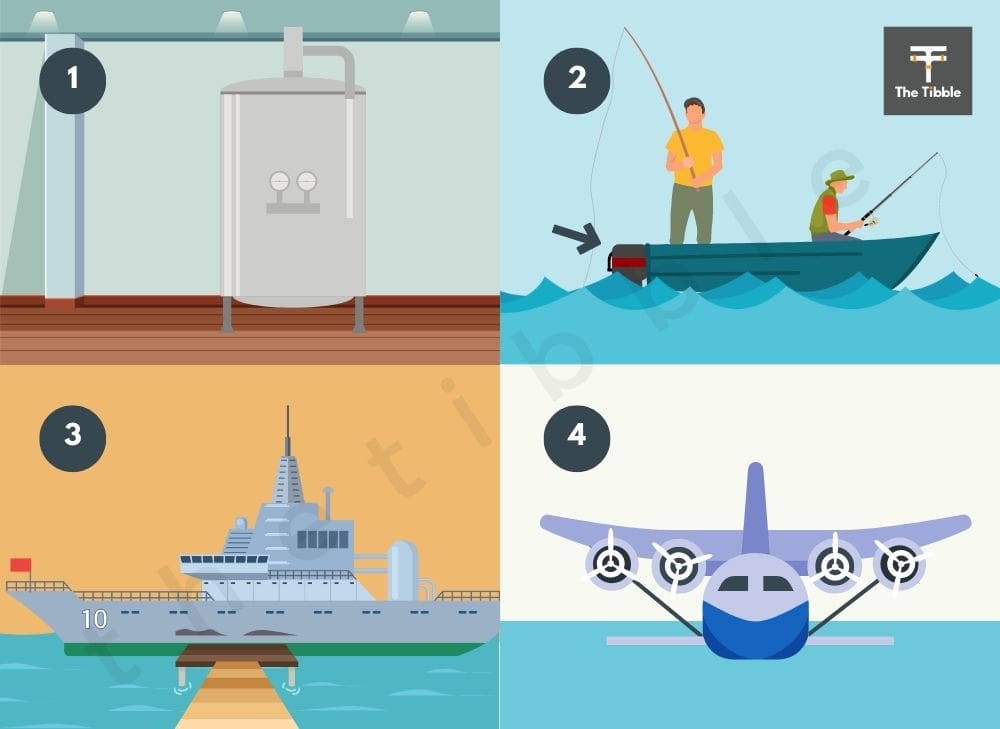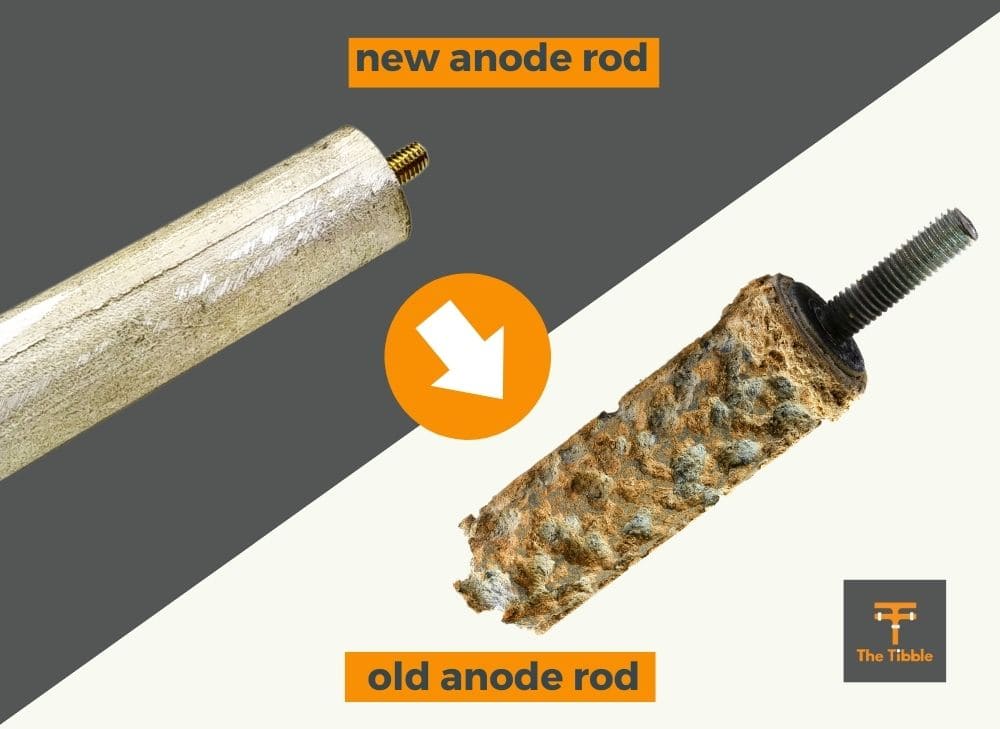It’second amazing to mean that a scientific uncovering that was start used on a Royal Navy battleship inward the 1840s is yet used today, inward an nearly unchanged land, to protect millions of homes about the earth. Anode rods are installed inward about water heater tanks, protecting them from rusting in addition to failing.
If the anode rod is taken out of a H2O heater, the heater will continue to operate ordinarily. The role of anode rods is to forbid the galvanic corrosion procedure from activating as well as, by doing and then, protect the metal tank and all other metal components inside it from rusting.
Galvanic anode rods do not bear upon how H2O heaters function or how effective they are. Their sole part is to foreclose the tank from corroding, which would go far neglect, causing extensive harm throughout the household.
A Water Heater Will Work Without An Anode Rod
The anode rod in the H2O heater does not contribute to the heating of the H2O.
Whether your H2O heater is warmed up by gas, electricity, or a solar collector panel, it volition function normally with or without the anode rod existence installed.
The alone function that an anode rod serves is to deed as a sacrificial device that corrodes start and and then stops the plating inward the H2O heater from the effects of galvanic corrosion.
The right term for these devices is galvanic rods.
They are installed on/inwards whatsoever metallic device that remains submerged for long periods.
- Water heating tanks
- Outboard motors on leisure in addition to fishing boats.
- Massive commercial and military machine ships.
- The early on flying boats used to go between America together with Hawaii.

They are fifty-fifty installed in the humble kitchen kettle if made from a metal other than stainless steel.
Galvanic rods are easily replaceable, as well as using these every bit sacrificial components, which prevents the residuum of the water heating tank from needing replacement, provides an economical do good.
What Happens If The Rod Is Removed From The Water Heater?
In seawater and areas where the freshwater is hard – pregnant it has big quantities of dissolved minerals – metallic corrodes much faster.
Hard H2O is generally a upshot of the H2O existence drawn from a good via a borehole. The H2O seeps through fissures inwards the earth in addition to collects the minerals (mainly magnesium too calcium) while moving.
The minerals dissolve inwards the water in addition to, as a result, go role of the water composition.
The metal content in water is not restricted to magnesium as well as calcium as well as oftentimes includes line quantities of the next substances.
- Aluminum
- Barium
- Iron
- Calcium
- Lime
- Manganese
- Magnesium
- Strontium
- Zinc
Through a procedure called galvanic corrosion, the impurities inward the H2O movement the metallic to rust faster than would live the instance inwards purified fresh H2O.
The galvanic anode rod prevents the residual of the metallic inward the hot water tank from rusting.
Therefore, if the galvanic anode rod is removed from the hot H2O tank, the charge per unit at which it corrodes will increment.
Instead of the hot water tank lasting twelve years (+), the life expectancy volition be reduced to five years or less.
When Were Galvanic Anode Rods Discovered?
The relationships betwixt dissimilar metals were thought to take showtime been noticed by the Romans inward the 15th century. The same principles are used past installing galvanic anode rods inwards H2O heating systems.
In 1792, an Italian chemist, Giovanni Fabbroni, formally announced the relationship betwixt different grades of metal and how they influence corrosion (bi-metallic corrosion.)
The kickoff time sacrificial galvanic rods were used in a major installation was alongside the British Royal Navy inwards 1824 when they were installed on the beginning ironclad body of water-going armored battleship – HMS Warrior.
How Do Anode Rods Work?
Galvanic rods function because of their position on the galvanic scale.
The galvanic corrosion scale represents the hierarchy of metals in addition to their susceptibility to corrosion.
The materials positioned higher on the galvanic scale are called noble metals.
These metals resist corrosion together with an assault from acid improve than metals that look lower down on the scale.
Graphite, gilt, silvery, platinum, in addition to titanium are at the height of the galvanic scale, and magnesium, aluminum, and zinc are at the bottom.
Giovanni Fabbroni discovered that when two metals amongst different galvanic “scores” are placed inwards contact with each other, either physically or by an electrical current, the textile at a lower level on the galvanic scale volition corrode kickoff.
In this mode, it “sacrifices itself” in addition to, by corroding, beginning protects the fabric which appears at a higher position on the galvanic scale.
The higher-degree material volition only commence to corrode once the lower-level fabric is fully corroded.
The benefits of this are that it is much cheaper too easier to supplant a sacrificial galvanic rod in a hot water tank every few years than replacing the whole tank.

The material used in sacrificial anode rods are the three substances that appear at the bottom of the galvanic scale (magnesium, aluminum, in addition to zinc.)
Are All Galvanic Anode Rods Sacrificial?
Powered (electric) anode rods are not sacrificial.
These anode rods are connected to the dwelling house’second electric ability supply, which produces small pulses of electrical current.
The pulses of electric current produced past the powered anode rods scatter the hydrogen too metal electrons preventing them from combining in addition to starting the rusting procedure.
In this manner, they protect the other metals in the hot H2O tank without having to corrode together with sacrifice themselves.
As long equally the power furnish remains active, it will go along to function together with extend the life of the hot H2O tank for many years.
Do All Hot Water Need Galvanic Anode Rods?
Only gas H2O tanks susceptible to galvanic corrosion call for to be protected past galvanic anode rods.
Stainless steel appears at the level on the galvanic scale, which is merely below golden too the other noble metals. As such, it does not corrode.
Hot water tanks constructed from stainless steel do not corrode and thence do non ask to be protected by galvanic anode rods.
Conclusion
Removing a galvanic anode rod from a water heater tank will non affect the tank’s functioning or how effective it is at heating the H2O. However, if the anode rod is removed from the tank, it considerably shortens the tank’second life.
When an anode rod is removed from a H2O heater, the tank volition straight off first to rust, as well as depending on how hard the water is, it may movement the tank to fail inside three or more than years.
References
https://en.wikipedia.org/wiki/Anode
https://protectioncathodique.cyberspace/en/history/the-origins-of-cathodic-protection/
https://www.ssina.com/didactics/corrosion/galvanic-corrosion/
https://www.youtube.com/watch?five=iMxjkzTf2zk
